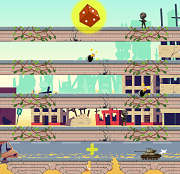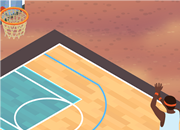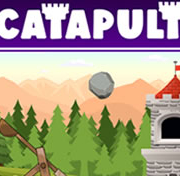Parts of a Volcano Science Game
This science game helps children practice parts of a volcano. You should be able to see the various parts of a volcano's eruption if you have ever wondered. The magma chamber is the heart of any volcano. It stores the molten magma that has been extracted from the earth's depths. This molten rock is derived from the Earth's crust and is propelled under pressure to eject from the volcano as the lava. To better understand the structure of a volcano, you can see an interactive diagram in the games section.
Cinder cones emit lava
What are cinder conical? These cones are made from lava cinders or magma-hardened lava. Because most of the lava in cinder cones is converted into ash, they emit less lava than other types of volcanoes. They also have smaller sizes than other types. Mt. Vesuvius.
Although there are many other cinder cones in the world, the California ones have at least five lava flow. Five lava flows have been tracked by the United States Geological Survey. Each one can be viewed individually at the summit of the cinder cone. This is a great way for you to see the lava cones. As you get closer to the cinder cone, be sure to follow its path.
Although cinder cones are the most widespread type of volcanic activity there are some special hazards. An eruption causes lava to burrow out of the cinder cone's base, lifting any cinders that aren't dense enough to withstand the heat. They then fall back in the surrounding areas as ash or toxic gas plumes. These can be devastating for those who live near such areas.
They have a flat roof with a large circular crater.
Cones form when magma is deposited at a volcanic vent rather than erupting into air. Although they look like a dome, they are much smaller. An eruption with a greater degree of violence than usual can create a dome.
The walls surrounding the crater are steep. Larger craters can slope to form terraces that drop into the crater. Some volcanoes have glaciers within their craters. But not all volcanoes can be formed in this manner. There are also composite volcanic eruptions.
A crater could be a large circle or a flattop. These cones may be intrusive, or extrusive. While the former can be cooled on the surface, the latter remain underground. Erosion exposes intrusive igneous rock.
A cone is a conical shape with a flat top and a large circular crater. Also known as the summit crater, this crater is also known as the crater. The summit crater is the cone's rim. Although the rim is less than the top, it still has an elongated depression.
They also have a secondary vent
Many vents are found in large volcanoes. These vents are called secondary vents and connect to the underground magma room. This central vent is where most of the material escapes during eruptions. Sometimes, however, the central vent can become blocked and magma has to find another route to the surface. Secondary vents can form satellite cones and adventitious cones as well as parasitic cones. Sometimes, they can even form large volcanoes.
They are home to a lava flow
A lava flow refers to a type of volcanic activity where hot lava flows through seawater or land. These flows create cinder cones and shield volcanoes as well as compound volcanoes. Other types of vents are also possible, including fissures. Some lava flows cover the entire ocean floor while others flow toward the highest mountain, like Mauna Kea, Hawaii's Big Island.
Large volcanoes produce lava flows that are extremely hot. They can reach temperatures of 700 to 2,000 F. When the temperature reaches this level, molten rock starts to rise towards the surface of the earth. A volcano is made up of many parts. These include a magma chamber and vent.
Smoother lava flows with low viscosity are more likely to exist. Sometimes the lava can reach several dozen meters in height. The lava with high viscosity can build up to a significant thickness. Pressure ridges, contraction fractures, and other factors can disrupt the flow's surface. This can cause an uneven surface, which often leads to an explosive reaction. Opal Cone's lava flow was a lava stream.
A lava flow is the most dangerous type of volcanic eruption. Although most flows are slow enough to avoid human casualties they can move quickly enough. The 1979 Nyiragongo eruption is an example of dangerous lava flows. The lava flow that escaped from fissures during an eruption was more than three hundred kilometers long and contained over 1.5 million cubic kilometers. The great destruction caused by the lava flow was felt in Goma.
They create ash clouds
Volcanic ash is made up of small, fissured particles which can be harmful if inhaled. Even though they are smaller than 1/12 inches in diameter, ash particles can still be hazardous if inhaled. The ash cloud can cause damage to agriculture, human health, and water supplies if it is large enough. The climate can also be affected by ash particles. To avoid any potential dangers, all volcano visitors should have proper safety equipment.
Ash clouds can often be seen in the sky after a volcanic eruption. These clouds are caused by hot volcanoes that have been lava-filled. Ash particles can reach hundreds of kilometers depending on where and how high an eruption is located. About 2% of the ash mass from an eruption can be left in the atmosphere. It can be hard to capture this fraction. Scientists have come up with a variety of ways to measure the size distribution of volcanic rock ash despite these challenges. These include laser diffraction and scanning electron microscope analysis.
Volcanic ash releases other gases and sulfur dioxide in addition to the ash particles. They are emitted into the stratosphere where they react with water to create sulfuric acid aerosols, which reflect sunlight and cool the Earth's surface. The local climate is affected by sulfur dioxide and ash particles, but the finer, smaller particles travel thousands of kilometers. They even orbit the Earth.
They can prove to be very dangerous.
One of the most hazardous aspects of a volcano is its release of gasses. While most of the gasses are water vapour, there are other potentially dangerous chemicals. Sulfur dioxide is a particularly dangerous gas. It can cause breathing problems and even damage to vegetation. Carbon dioxide, however, is much heavier than air and can be extremely harmful to animals. Large amounts of either one or both can be released by the eruption of a volcano.
The most toxic volcanic gases are the ones that you will encounter. Even a mild eruption can cause death. Large amounts of carbon dioxide can cause large scale deaths because it has a lower density than air. Three villages were drowned in 1986 by the Lake Nyos volcano, which released tons of carbon dioxide. Scientists monitor the carbon dioxide emissions of volcanoes to make sure they don't cause more damage.
Although lava from volcanoes can be deadly in some cases, it isn't as dangerous as you might think. The liquid lava from a volcano can travel great distances. A recent eruption in the Democratic Republic of Congo caused a lava stream that claimed many lives. You should also be aware of other dangers associated with volcanoes. To avoid volcanic hazards, you should always be in a safe area.











